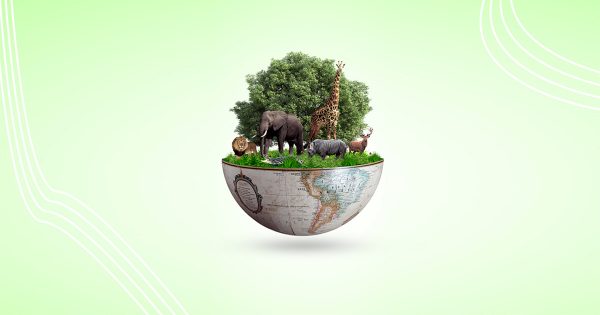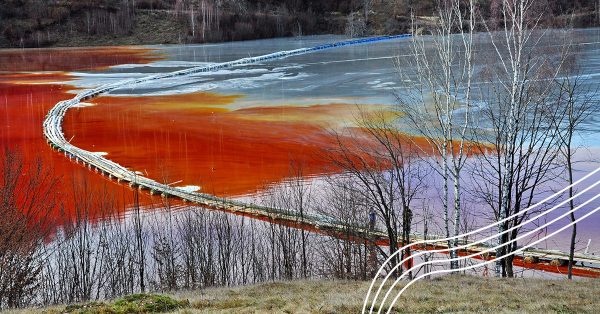Mining accounts for roughly 13 to 14 percent of Kazakhstan’s gross domestic product and more than 20% of the country’s exports. 1 Gold mining, in particular, has seen impressive growth over the past few years as foreign mining companies made huge investments into the country’s top mines. Explored since the Soviet times, the largest of its open-pit gold deposits — the world-class Vasilkovskoye (near Kokshetau) — has even been speculated to be an acquisition target by two large mining companies from China.
According to the country’s vice minister of industry and new technologies, Nurlan Sauranbayev, Kazakhstan is well-placed for its planned production increases; it has reserves of gold in categories A, B and C1 of 1,159 metric tonnes; reserves in the C2 category are reported at 1,107 metric tonnes; and projected reserves amount to 9,565 metric tonnes, including 7,725 metric tonnes in gold deposits and 1,840 metric tonnes in complex gold-containing deposits. 2 Most of Kazakhstan’s explored and developed gold deposits are located in the north, east, and southern portions of the country near the major cities of Nur-Sultan, Karaganda, and Almaty. Several studies are suggesting that the country’s actual reserves may be much larger because exploration activity in Kazakhstan was almost non-existent for about 30 years, providing potential investors with attractive odds for finding new deposits there. 3
The Kazakh government is committed to mining 130 metric tonnes of gold per year, and expects to reach this production target around 2025–2030, making it the ninth largest producer in the world and second in the Commonwealth of Independent States. 4 Kazakhstan is also upgrading its refining capacities to produce more gold that is in accordance with the London Good Delivery LBMA international standards. 5 Current policies are gearing the country to fully utilise its existing domestic refinery capacity, and if achieved at current production rates, it should be possible for Kazakhstan to refine all of the gold that it produces for the foreseeable future.
For investors, good practices of reporting on mineral deposits and exploration activities build trust in a country’s mining capabilities. Kazakhstan has made impressive strides in that regard to make the business climate more attractive for its mining sector. 6 In 2016, Kazakhstan became a member of the Committee for Mineral Reserves International Standards (CRIRSCO), and aligned its reporting standards with that of the CRIRSCO. This placed Kazakhstan on par with international reporting standards found in Organisation for Economic Co-operation and Development (OECD) member jurisdictions such as Australia’s JORC Code, Canada’s CIM Guidelines, and Chile’s Certification Code. 7
Kazakhstan’s membership in CRIRSCO will boost its mining sector and allay the concerns of potential investors, who may have been hesitant to consider Kazakhstan due to its Soviet legacy reporting requirements. The country’s actions have paid off handsomely. A Fraser Institute Annual Survey of Mining Companies 2017 found that Kazakhstan was the most attractive jurisdiction in Asia based on its mining sector’s investment attractiveness rating. 8
On the mining front, the country faces the challenge of managing hazardous waste deposits left behind by legacy mines from the Soviet era. 9 Mining operators in Kazakhstan, like most other mining jurisdictions, are responsible for the rehabilitation of mining sites during mine closure. Current administrative mechanisms of financing mine closure in many countries carry risks for the environment, the economy, communities, as well as for the operators. But by reevaluating their mining assets and employing Clean Earth Technologies’ non-toxic gold recovery reagent and dewatering process, mining companies in Kazakhstan and around the world will be able to mine for gold in a sustainable and clean way.
Kazakhstan has historically been a cash society. Although there is low domestic retail demand for the precious metal, the National Bank of the Republic of Kazakhstan has been a regular purchaser of gold bullion. The country’s Precious Metals Law gives the Kazakh central bank a priority right to buy out fine gold from producers. 10 And with its stated intention of exercising this priority right to purchase gold bullion, Kazakh producers who comply either with London Good Delivery or Kazakh standards would have a committed customer for their products. 11
There appears to be a glittery future ahead for Kazakhstan’s gold mining industry. Given the pivotal role that the extractive sector plays in Kazakhstan’s economy, integrating sustainability considerations in its mining policy framework is a priority and the country has achieved important progress in its environmental policy framework as well. Having made significant inroads to ensure that its gold mining sector is financially, socially, and environmentally responsible, Kazakhstan can look towards continued growth and capitalise on sustainable and clean mining practices to achieve its mining target of 130 metric tonnes per year by 2025–2030.
____________________________
[1] K. Absametov et al., “Assessment Report on Classification of Energy and Mineral Resources and Its Management in the Republic of Kazakhstan” (Almaty: Kazakh National Research Technical University, 2019), p. 5.
[2] Vladislav Vorotnikov, “Kazakhstan Intent on Becoming a Top 10 Gold Producer,” E & MJ, October 1, 2016, https://www.e-mj.com/features/kazakhstan-intent-on-becoming-a-top-10-gold-producer/.
[3] Anastasia Bogdanova, “Kazakhstan: Mining Law 2020: Kazakhstan,” Minex: Eurasian Mining Information portal (Minex, March 5, 2020), https://www.minexforum.com/en/kazakhstan-mining-law-2020-kazakhstan/.
[4] Michael E. Wilson and Elena Lee, “Kazakhstan’s Gold Mining Sector and the New Regulation on Gold Sales,” Alchemist, no. 66 (April 30, 2012). http://www.lbma.org.uk/assets/Alch6604Wilson.pdf
[5] Ibid.
[6] Zhanar Faizuldayeva, “A Comparative Study of Regulatory Approaches to Mine Closure with a Special Emphasis on the Current Situation in the Former Soviet Union,” Proceedings of the 11th International Conference on Mine Closure, 2016, https://doi.org/10.36487/acg_rep/1608_25_faizuldayeva.
[7] Nurgul B. Abdreyeva and Azamat A. Kuatbekov, “Mining in Kazakhstan,” Lexology, July 18, 2018, https://www.lexology.com/library/detail.aspx?g=93e7864c-c2b8-420f-acd8-ce281beec682.
[8] In the Fraser Institute’s 2017 annual survey of mining and exploration companies, Kazakhstan outperformed other Asian jurisdictions, with respondent ratings improving most significantly for the legal system and the reduction of uncertainty regarding administration, interpretation, or enforcement of existing regulations. See, Ashley Stedman and Kenneth Green, “Fraser Institute Annual Survey of Mining Companies 2017,” Annual Survey of Mining Companies: 2017 (Fraser Institute, 2017), https://www.fraserinstitute.org/sites/default/files/survey-of-mining-companies-2017.pdf. For more on their 2017 survey on mining and exploration companies, see, https://www.fraserinstitute.org/studies/annual-survey-of-mining-companies-2017.
[9] Antoine Blua, “’Dirty 30′: Environment Group Names the World’s Dirtiest Cities,” RadioFreeEurope/RadioLiberty (Radio Free Europe / Radio Liberty, February 2, 2012), https://www.rferl.org/a/1078702.html.
[10] Yerbolat Yerkebulanov, “Mining Law 2020: Kazakhstan – Energy and Natural Resources – Kazakhstan,” Welcome to Mondaq (GRATA International, March 5, 2020), https://www.mondaq.com/mining/898712/mining-law-2020-kazakhstan.
[11] Ibid.



